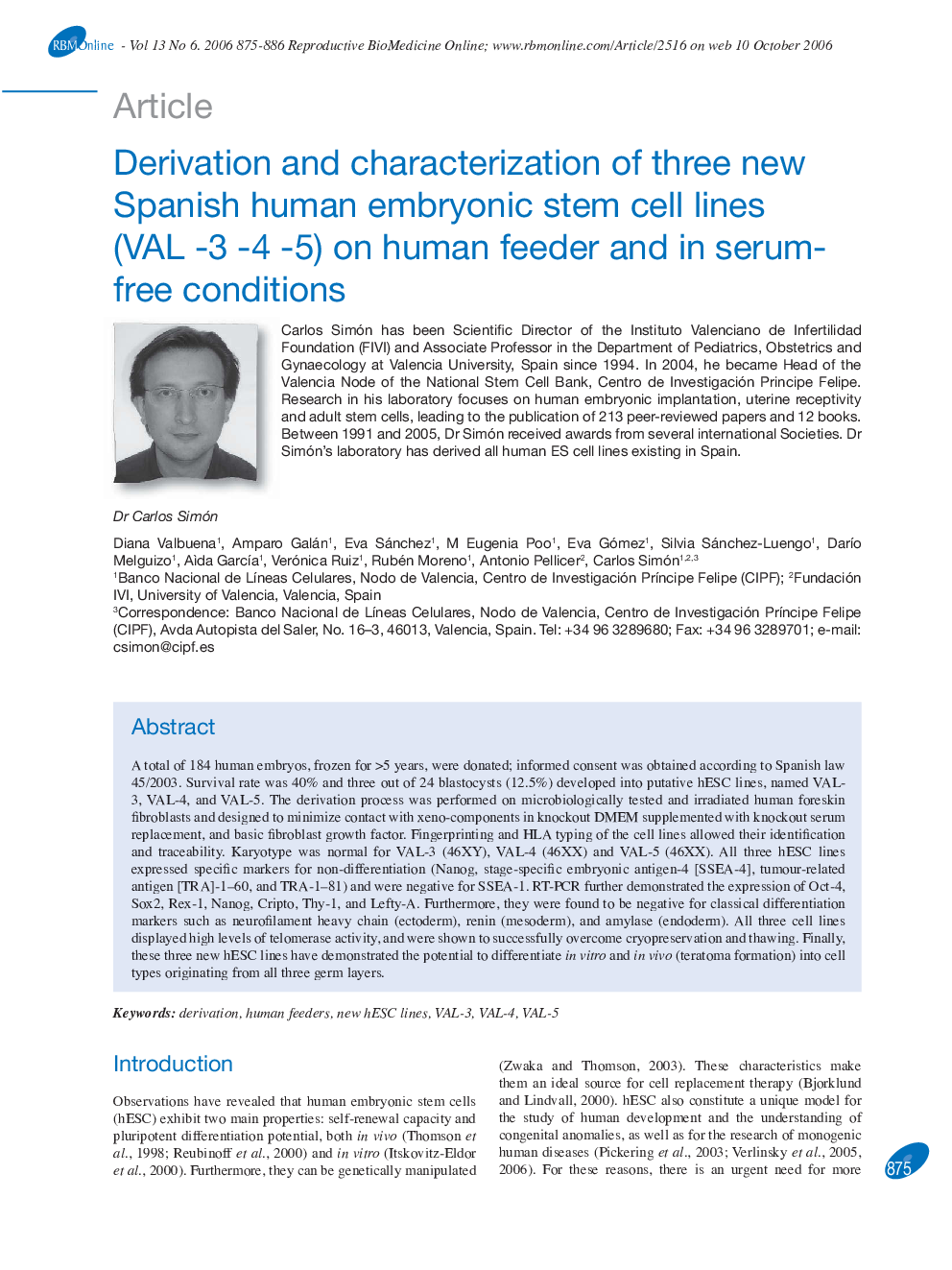| Article ID | Journal | Published Year | Pages | File Type |
|---|---|---|---|---|
| 3973404 | Reproductive BioMedicine Online | 2006 | 12 Pages |
A total of 184 human embryos, frozen for >5 years, were donated; informed consent was obtained according to Spanish law 45/2003. Survival rate was 40% and three out of 24 blastocysts (12.5%) developed into putative hESC lines, named VAL-3, VAL-4, and VAL-5. The derivation process was performed on microbiologically tested and irradiated human foreskin fibroblasts and designed to minimize contact with xeno-components in knockout DMEM supplemented with knockout serum replacement, and basic fibroblast growth factor. Fingerprinting and HLA typing of the cell lines allowed their identification and traceability. Karyotype was normal for VAL-3 (46XY), VAL-4 (46XX) and VAL-5 (46XX). All three hESC lines expressed specific markers for non-differentiation (Nanog, stage-specific embryonic antigen-4 [SSEA-4], tumour-related antigen [TRA]-1–60, and TRA-1–81) and were negative for SSEA-1. RT-PCR further demonstrated the expression of Oct-4, Sox2, Rex-1, Nanog, Cripto, Thy-1, and Lefty-A. Furthermore, they were found to be negative for classical differentiation markers such as neurofilament heavy chain (ectoderm), renin (mesoderm), and amylase (endoderm). All three cell lines displayed high levels of telomerase activity, and were shown to successfully overcome cryopreservation and thawing. Finally, these three new hESC lines have demonstrated the potential to differentiate in vitro and in vivo (teratoma formation) into cell types originating from all three germ layers.
